Grow Local South Texas and Gill’s share a passion for organic vegetable gardening and helping local gardeners be successful growing their own food. Here in South Texas we have 2 great seasons for growing food each year – Spring and Fall. Join Gill’s Wyatt Page as he demonstrates how to grow veggies using only organics.
It’s Wyatt again – welcome to part 3 of my Fall Veggie Vlog. I decided to start all my cool weather veggies this year from seed and share video tips along the way – take a look at Part 1 and Part 2 (ICYMI). After sprouting in peat pots, my seedlings are ready to transplant into the ground. Check out my tips for transplanting young seedlings, including protecting them from still-warm temps, spacing, watering, and feeding.
Video Recap:
- Protect Cool Weather Seedlings from High Temperatures
It’s time to get cool weather veggies like cabbage and broccoli planted into the ground, but we are still having some 90+ degree days. Using a thin layer of Pine Straw Mulch over your young plants can help protect their surface roots from heat and help retain moisture.
- Tips for Transplanting
Not too deep! Be sure to plant level with the surrounding soil so you don’t suffocate the surface/feeder roots. Use a good organic starter fertilizer like Biotone when you plant. Mix a small handful with the soil, then backfill around your new plant.
- Give Them Plenty of Space
A good rule of thumb is 12-16” spacing between most cool weather veggies. Visualize their full-grown size. Plants that are too crowded can encourage bad bug infestations.
- Gentle Watering!
Don’t blast your tender young plants with a water hose. They need a gentle “blessing” of water from a watering can. Since you can’t drench them yet, they will likely need a gentle watering 2-3 times a day until they are established.
- Feed Regularly
Liquid Hastagro is an excellent organic plant food that’s great for young plants. You can hook it up to your hose and broadcast it over the whole garden about once every 2 weeks. Liquid fertilizer is easier to apply accurately on young plants. Using a granular is ok too, but it’s easy to use too much.

-Wyatt
There’s an abundant palette of garden herbs & flowers that thrive when planted in Fall. No need to keep them separated – pair them together for the perfect garden to table companions.
The classic herbs for the Fall season align with those familiar flavors for soups and holiday meals. Sage, Thyme, Rosemary, Parsley, Oregano, Cilantro, and Chives are well known and very successful in South Texas gardens.

Epazote, Yerba Buena, and Yerba Anís (aka Mexican Mint Marigold or Mexican Tarragon) also grow well here in South Texas. Epazote is used when cooking beans to ease digestion. Yerba Buena is a relative of mint commonly used in teas and to freshen breath. Yerba Anís is the flavor associated with licorice, but the fresh leaves + oil and vinegar make an amazing salad dressing.
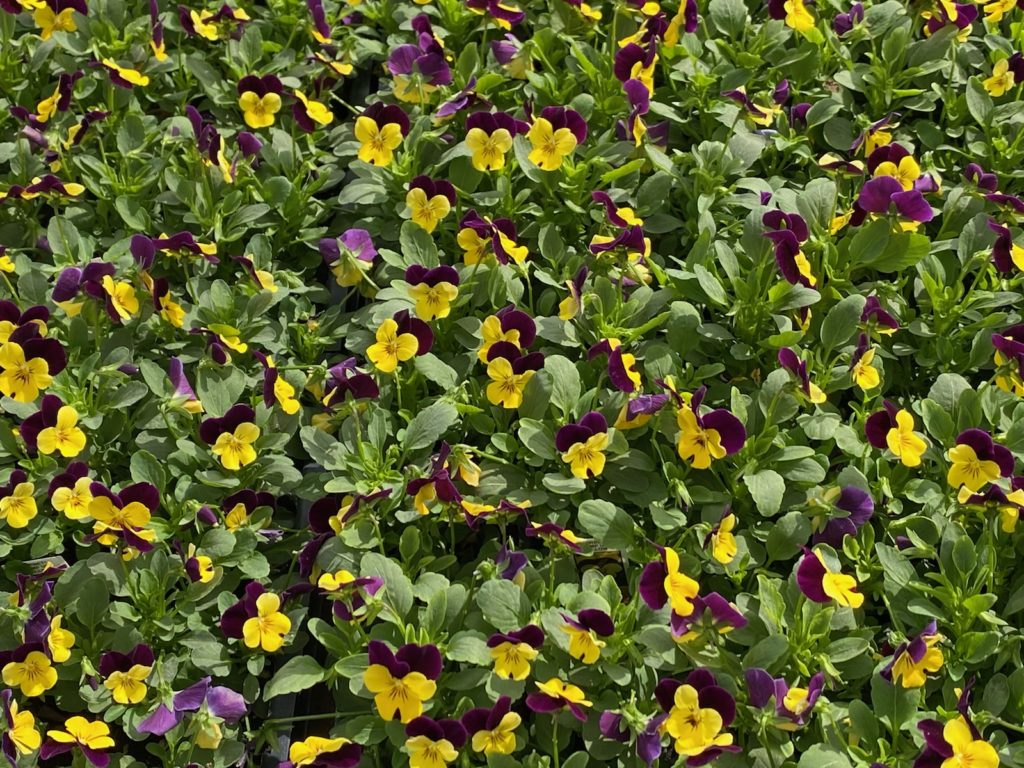
Fall is prime time for flowers too: Pansies, Violas, Calendulas, Nasturtiums, Roses, Lavender, Anise Hyssop, Marigolds, & Ornamental Cabbage and Kale are all beautiful AND edible with proper care. (Remember to not use chemical fertilizers & treatments on your flowers, especially if you plan to eat them.)
Instead of thinking of separate herb and flowerpots or beds, try planting them together. Maybe a soup garden with Parsley, Sage, Thyme, and Violas. Or a salsa garden in a large pot with Cilantro, Mexican Oregano, and Pansies for color.
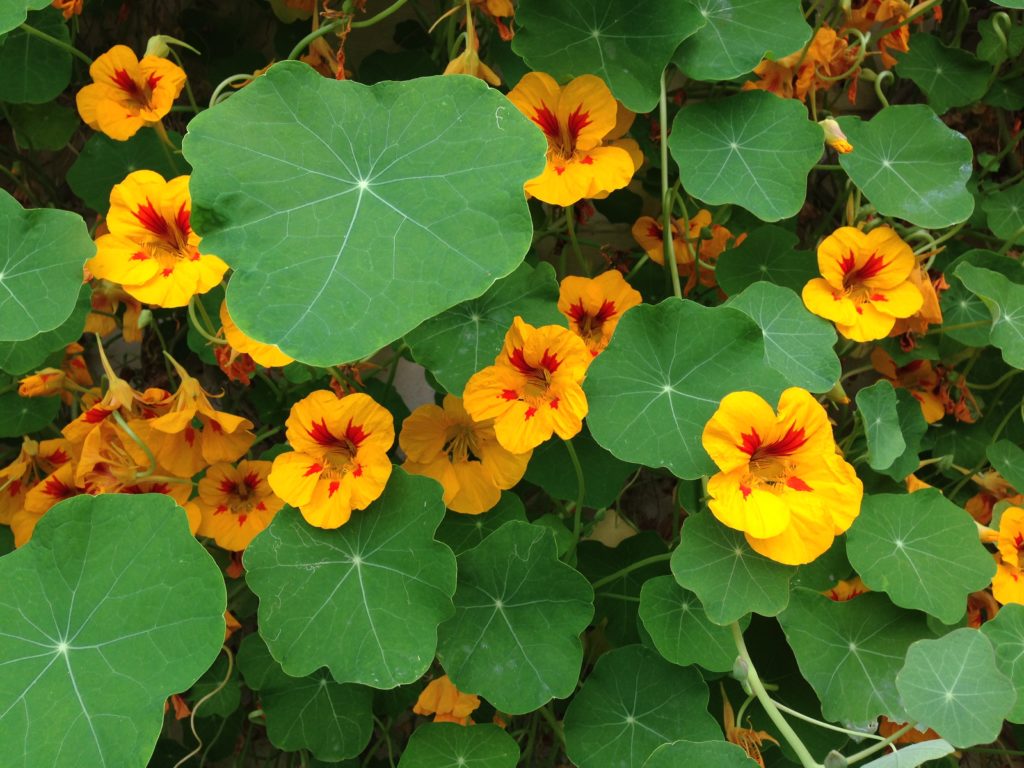
Herbs and flowers can be planted in ground; making sure the soil is well drained; or in containers using a good potting mix. All will need at least 4-6 hours of sun and regular watering, especially at first planting.
Our go-to organic solutions for herbs and flowers (and all things edible):
- Hasta Gro, Espoma Plant Tone, & BioTone for feeding.
- Spinosad, Neem Oil, and Beesafe 3 in 1 spray to prevent and control pests.
Need more ideas? Come see us!

-Debbie
Akasha Yoga is a great example of a collaborative design between property owners and Gill’s landscape designer Harry Villarreal. The owners’ vision for Akasha was to harmonize and integrate the indoor and outdoor spaces. To compliment the modern interior design, the owners used earthy, grounding updates to the exterior including the wooden sign, steel planter boxes, and a gabion rock wall out front.
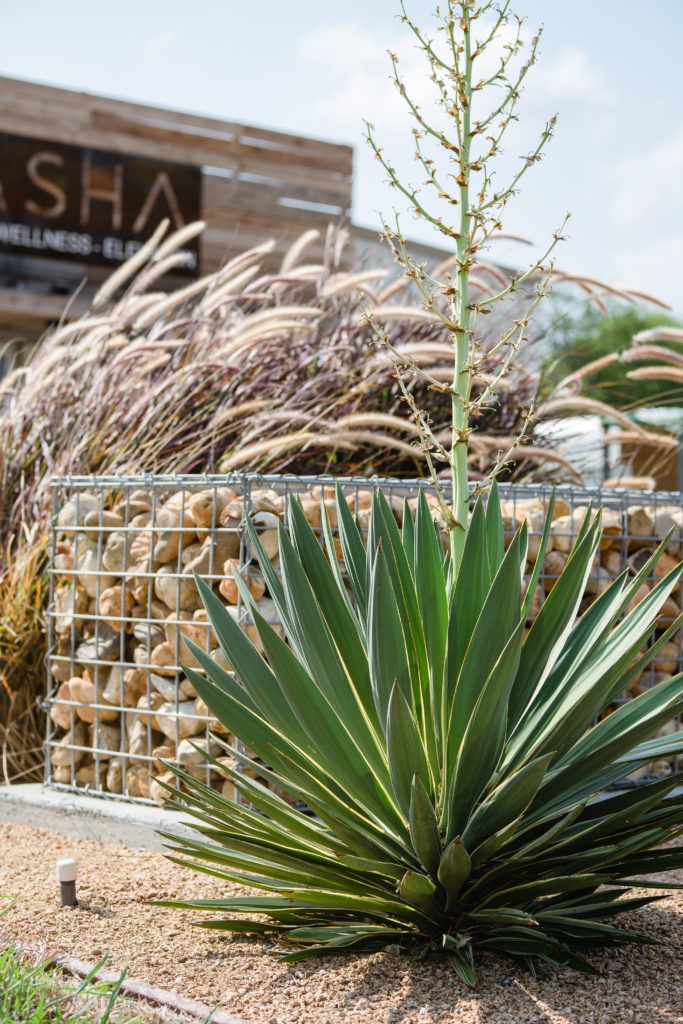
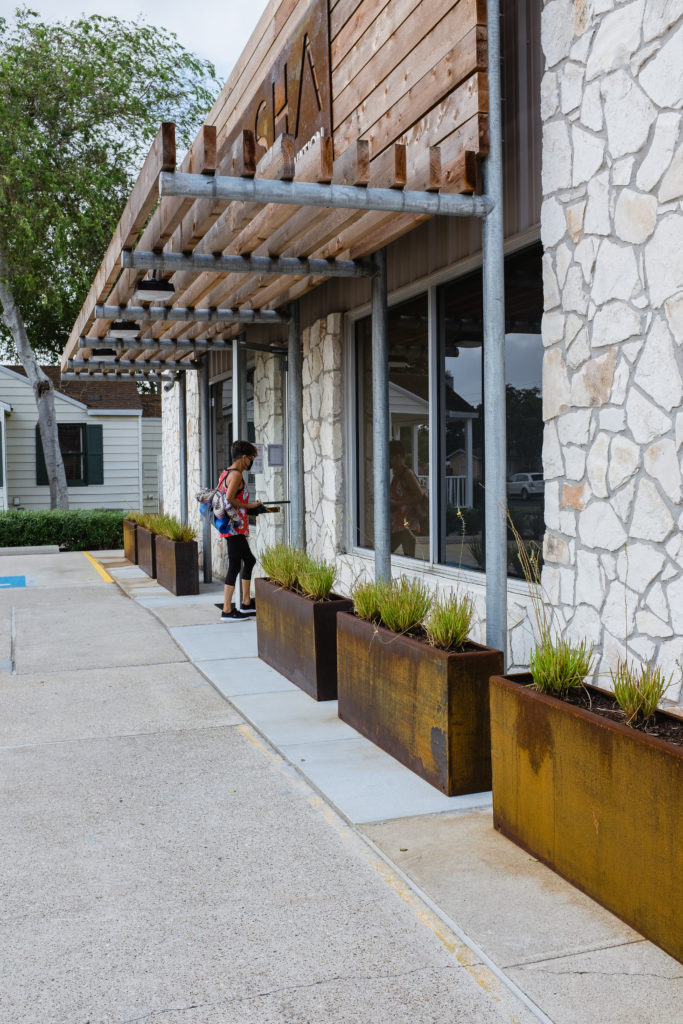
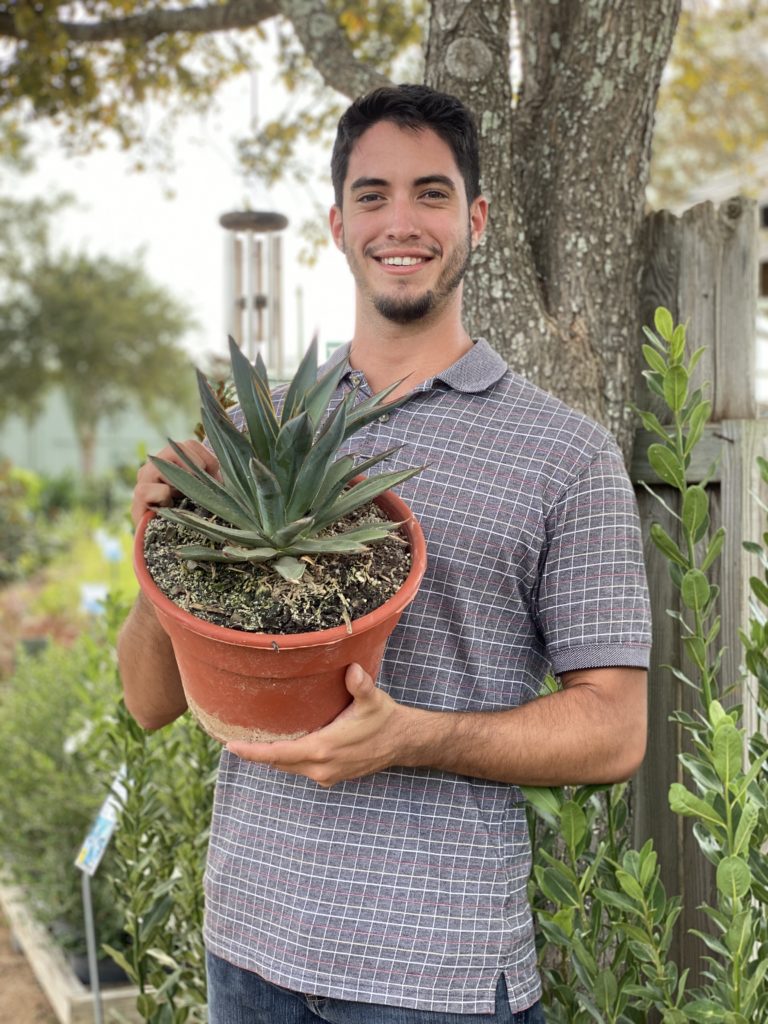
Harry had the task of tying the existing design elements together with carefully chosen plantings. The owners knew they wanted a low-maintenance landscape with a strong visual impact to accent the clean lines of the space, so Harry kept it minimal: a decomposed granite bed with a single line of Blue Glow Agave and Hedgehog Aloe, Orange Bulbine that can take the heat of the steel planter boxes, and soft Purple Fountain Grass to frame the corner of the gabion wall.
Such a fun, collaborative project for Gill’s that we get to drive by and see on Airline Road every day!

-Jesse
This past week, one of our customers explained that her squash plant had great foliage and lots of blooms, but it was not producing any squash. This can often be attributed to a watering or fertilizer issue, but sometimes you might have a pollination problem. So, what’s the solution?

Bees! Bees are the best pollinators, and they are the reason many of your veggies are able to produce. Bees move pollen back and forth between male and female flowers on your plants. The transfer of pollen fertilizes the female flower allowing the plant to fruit.
The best way to attract these powerful pollinators to your garden is to plant pollinizer plants. Here are some of our favorite plants to bring home the bees:
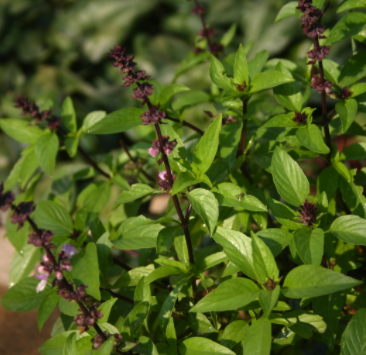
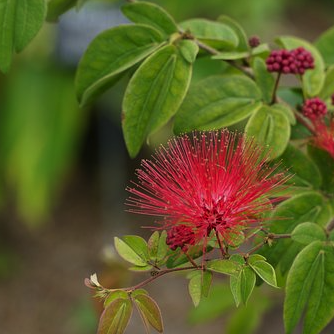
- Magic Mountain Basil or Thai Basil: excellent varieties for cooking and irresistible to bees!
- Dwarf Calliandra (powder puff plant): popular landscape shrub that has beautiful “powder puff” blooms.
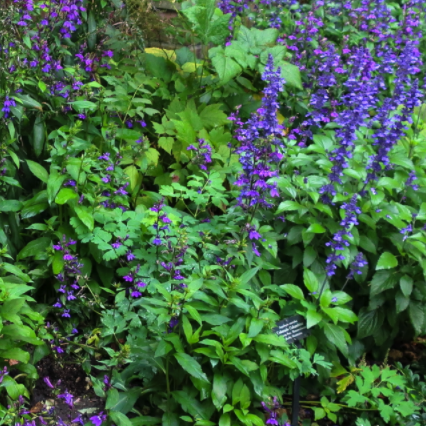
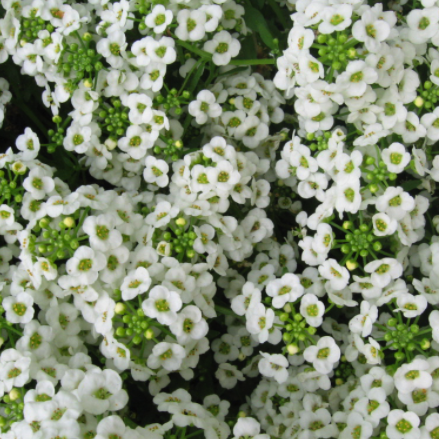
- Mystic Spires Salvia: long purple spires that attract a variety of pollinators to the garden including bees and hummingbirds.
- Alyssum: low- growing annual with purple or white blooms and a lovely fragrance that’s attractive to humans and bees.
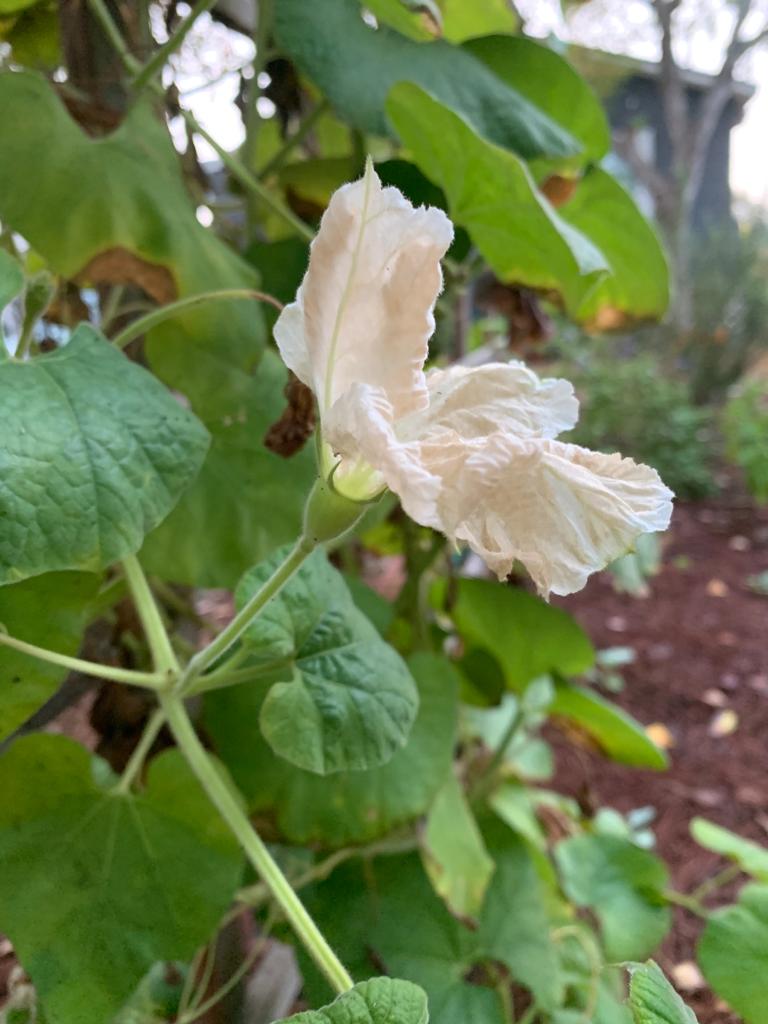
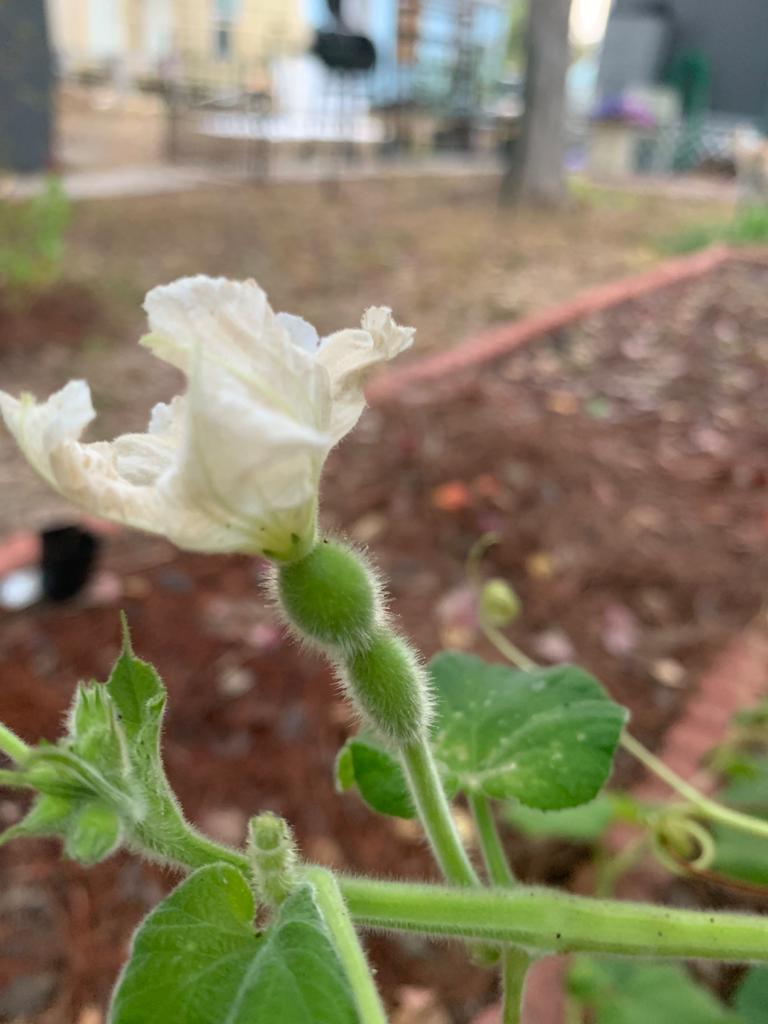
Pro tip: On occasion, the bees can miss some plants. You can “false pollinate” your plants with a Q tip or a small paint brush. Lightly brush inside the male flower, then brush inside the female flower to help transfer pollen.

-Wyatt
Join us Friday, November 20th at 4:30PM outside in the garden center as we thank our team members for their many years of service to Gill’s & our community!

DeAnna Baumgartner
Garden Center Manager
35 Years!
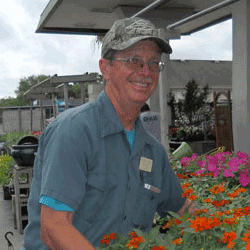
Gary Cring
Gardening Expert
31 Years & Retiring!
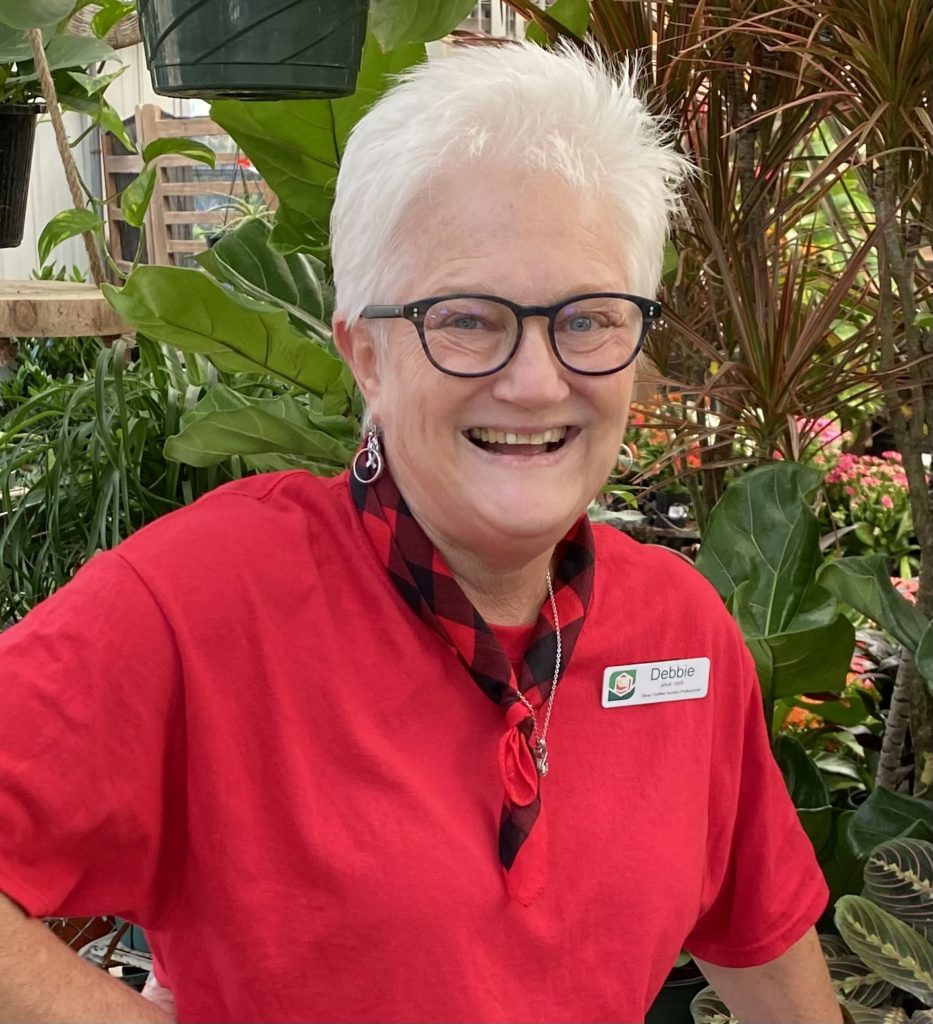
Debbie Pinkerton
Buyer
25 Years!
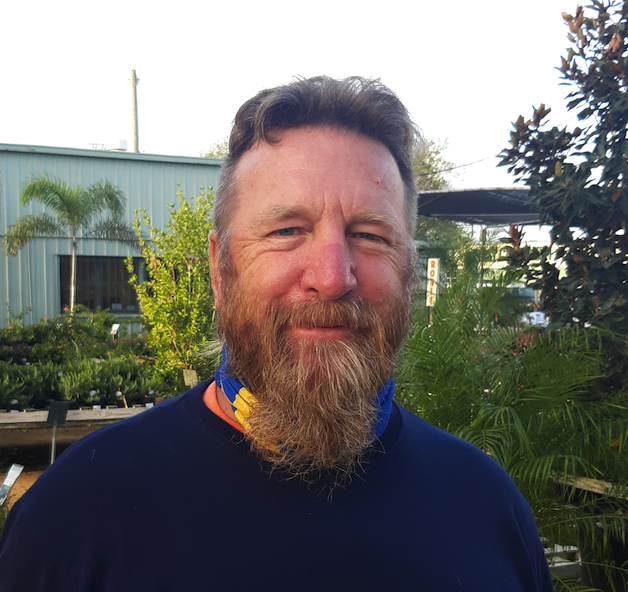
Doug Johnson
Landscape Crew Leader
20 Years!

Stacy Valdez
Office Administrator
15 Years!

Wyatt Page
Garden Center Assistant Manager
5 Years!
All six of these people have one thing in common – they want the best for you, our customer. They want to teach you best gardening practices, they want to bring you the best plants, and they want to help you beautify your garden.
I’ll tell you a little secret. We buy plants from the same growers other garden centers buy their plants. What makes the difference is picking the right plants (for our region) and then caring for the plants once they arrive. That takes a lot of plant know how and a passion for service – that’s what makes our garden center better than most. In our landscape department we are constantly refining our techniques and teaching our crew members to build landscapes that are functional and beautiful. We look for smart, kind, passionate people to work on our team and then we encourage and nurture their growth as gardeners, landscapers, and educators. Congratulations to each of them, congratulations to Gill’s!

-Sally Gill
I’ve admired BJ and Michael’s home for years. It’s a beautiful Santa Fe style stucco home with a clay tile roof and old dark stained wood front doors. The landscape follows the theme with brightly colored benches and ceramic containers mixed with artistically placed specimen agaves, yuccas, and palms.

This past week a group of us toured her garden; I felt like I was visiting a remote Mexican countryside estate. We moved from the front under a wood arbor and through a gate into their herb garden, all in large pots – Italian parsley, chives, mint, sage, some tucked under towering jatropha and schefflera. The walk to the back led us through banks of holly fern, ruellia, and liriope with blooming viola in Talavera wall pots hanging on the fence, interspersed with climbing red passion vine. The back included an area with blooming poinsettia, fire spike, plumeria, European olives, night blooming red cereus and lots and lots of succulents. The view from the interior looks out on to an intimate clay tile patio, scattered with dining tables and chairs and a multi-level stone Cantera fountain with cascading water and a backdrop of bougainvillea blossoms. Stunning!!


And you think, all they must do is work in their garden. Well, no. BJ shared with us her tricks to making her garden work for their current lifestyle. The first rule is nothing gets covered during cold spells. They live a block from the bay, which does bring warmer air off the water. After a cold winter, there’s a lot of cutting back, but if a plant doesn’t make it, it’s gone. Their permanent collection of potted plants are all on a drip irrigation system with a timer. She said the biggest challenge is keeping the timer adjusted correctly. And finally, no grass in this landscape!
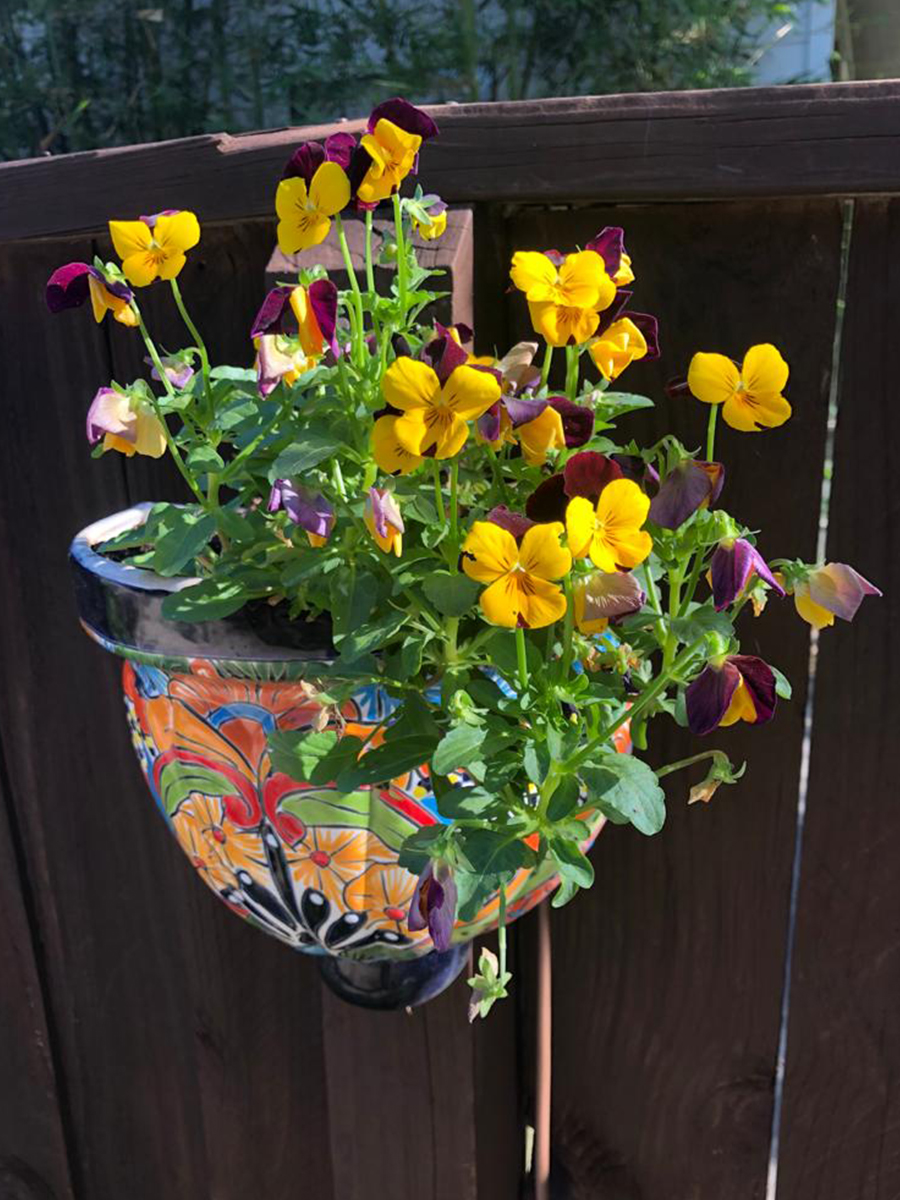
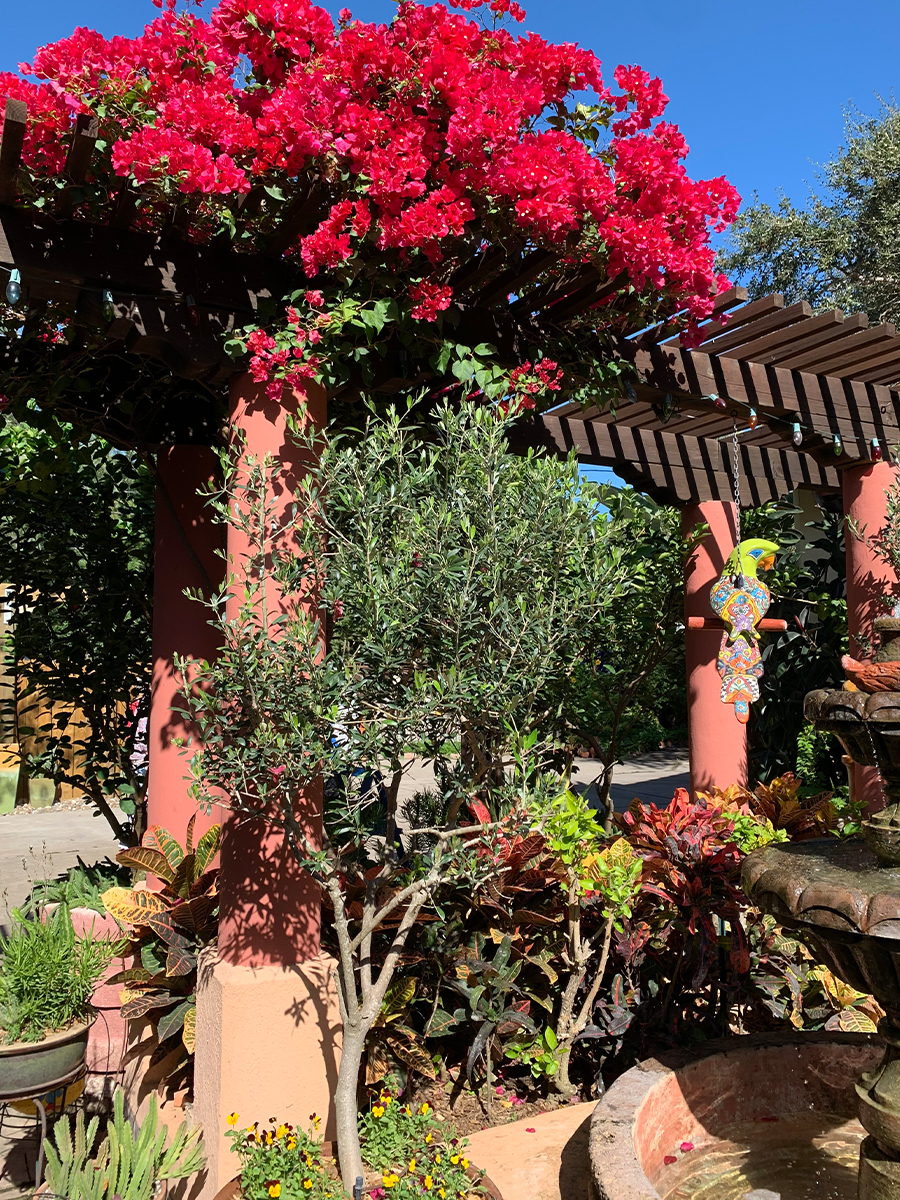
I’m thinking BJ must have been born with dirt under her fingernails. Her parents weren’t gardeners, but at a very young age she was attracted to women neighbors that did garden. One woman had an extra square of space and let BJ loose to grow veggies and flowers of her choosing. In college she was advised she should be a farmer. When raising her boys, BJ grew vegetables but gave that up when she realized her sons and husband weren’t crazy about greens. Today, succulents are her passion.
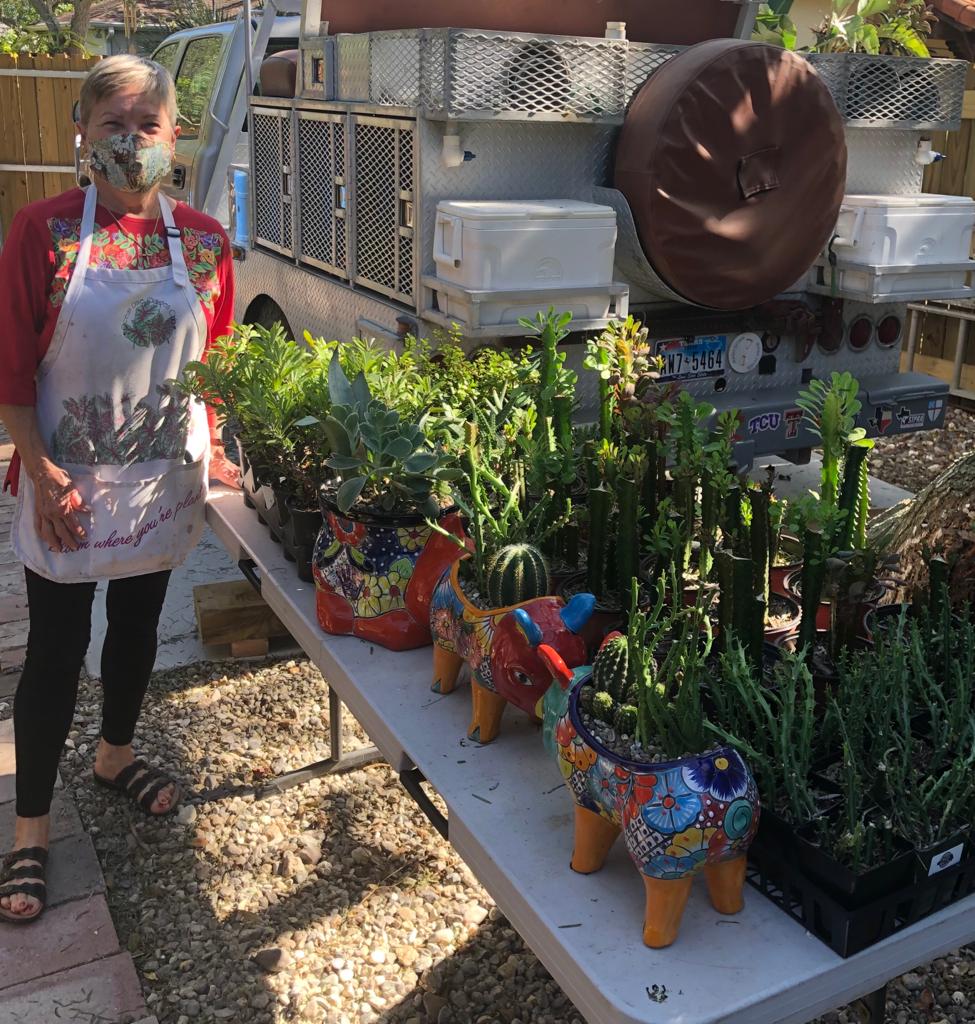
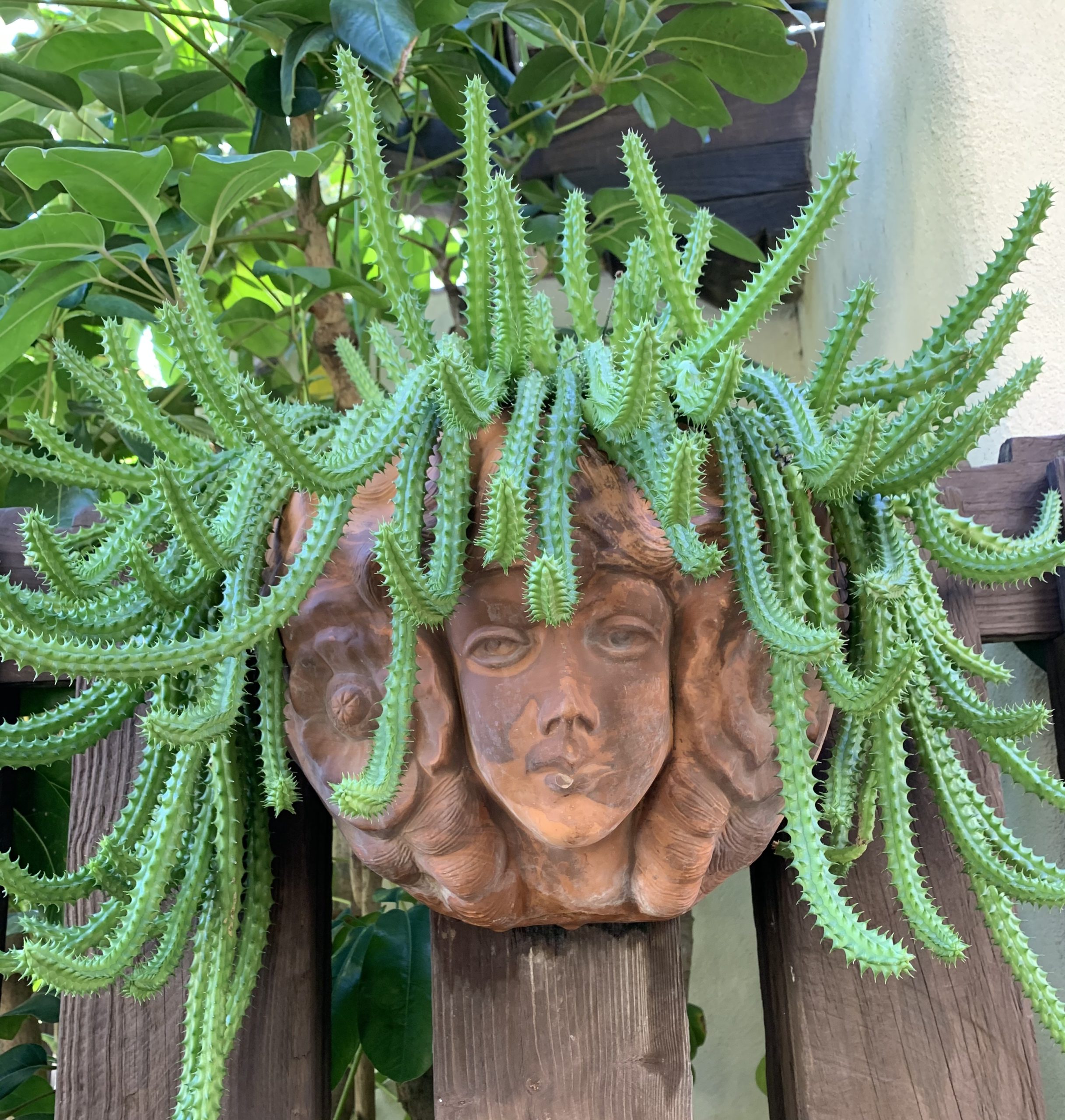
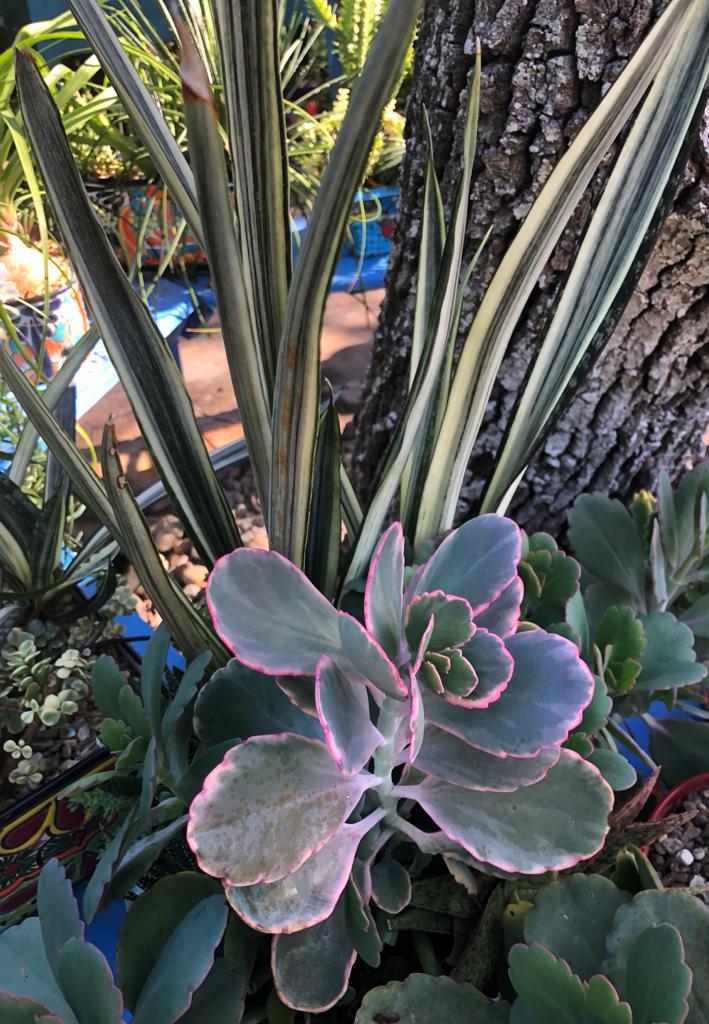
BJ loves succulents. She loves collecting succulents, some from Gill’s, some from friends, some from HEB – anywhere and everywhere she can find a new variety. She harvests from the mother plant, growing from cuttings and offshoots. Many of her succulent arrangements are combinations of three or four varieties, each placed to compliment the other. BJ has a designated work area strung with shade cloth where she does her potting and another area where she does her growing. She doesn’t just keep all these succulents to herself; she has one more station where she places plants that are ready for delivery to our South Texas Botanical Gardens to be sold in their gift shop!
Dr. Wommack of our South Texas Botanical Gardens said how thankful he is for folks like BJ & Michael in our community who share their talents and gifts to enrich the gardens. By growing and gifting plants, income is generated for the gardens and visitors benefit from BJ’s passion for succulents.
Thank you BJ and Michael this Thanksgiving week for sharing your garden gifts with our South Texas community!

-Sally Gill
We love this time of year here in the garden center, and we want to make sure you get the very best out of your holiday classics! So, we made a list of quick care tips to help you out, and included some fun facts about each plant:
Poinsettias
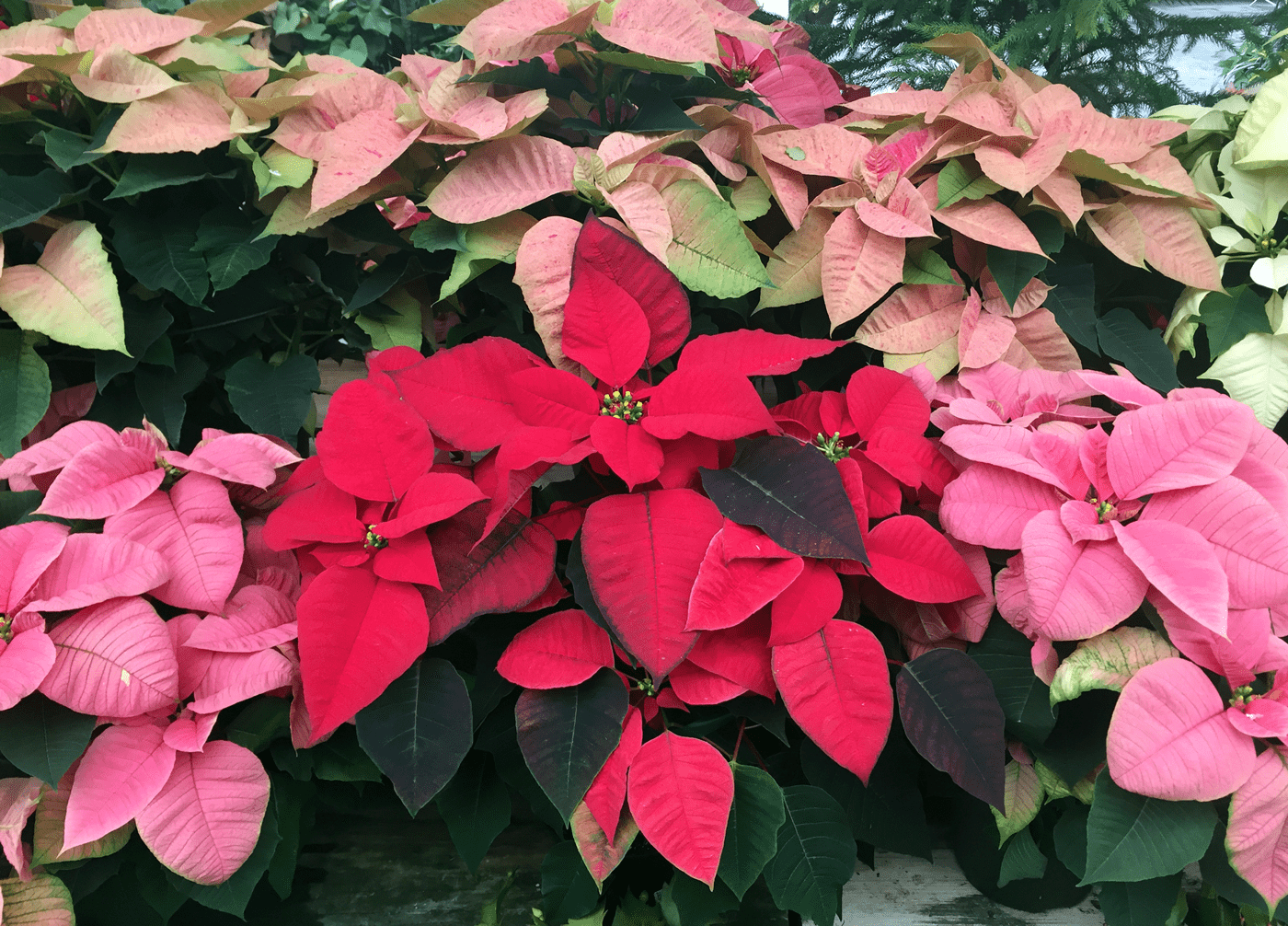
- Place in indirect sunlight, indoors or out
- Water every other day to every 3rd day by setting in sink to soak, then drain or place 4-5 ice cubes per day in pot
- Fertilize every 2 weeks with liquid organic Hasta Gro
- Periodically freshen up by pulling old leaves
Fun facts: Poinsettias are a type of succulent native to Mexico. Before they arrive here at the garden center, they require 12 hours of total darkness each day to produce blooms!
Christmas Cactus
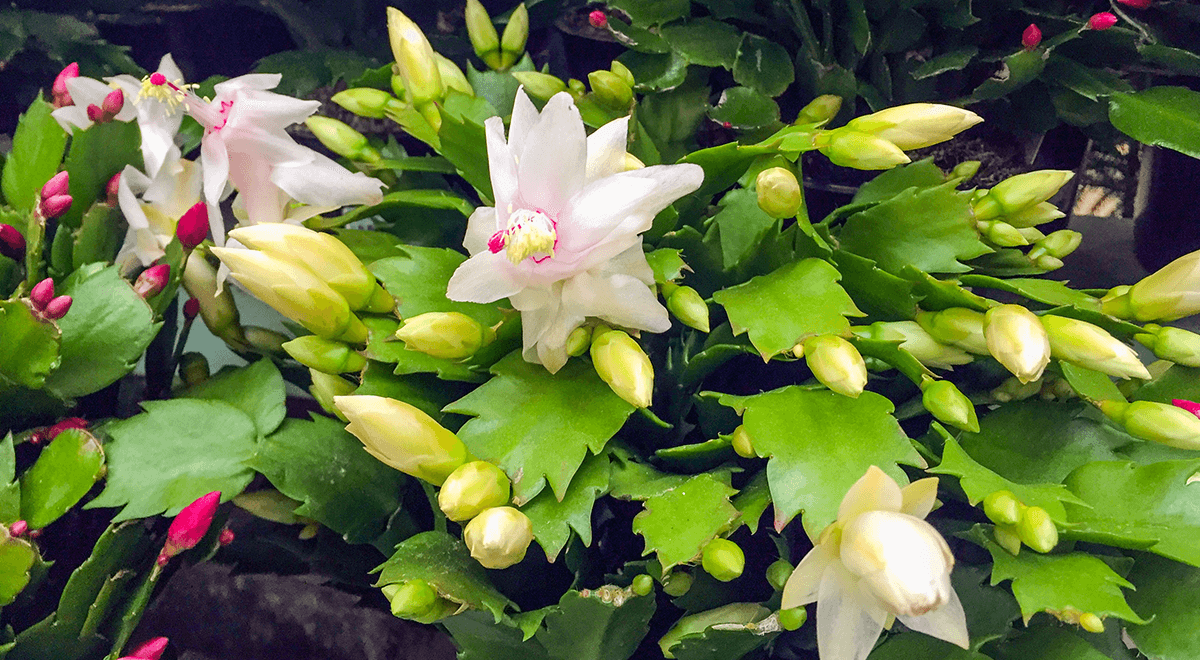
- Keep in indirect sunlight, indoors or out
- Water when dry, about every 4-5 days
- Fertilize every 2 weeks with liquid organic Hasta Gro
Fun facts: Can last a VERY long time (as in 50 years or more). Native to tropical forests of Southeastern Brazil. If you are not seeing many blooms, try placing it in a dark area away from light for 8-12 hours – similar to poinsettias…
Amaryllis
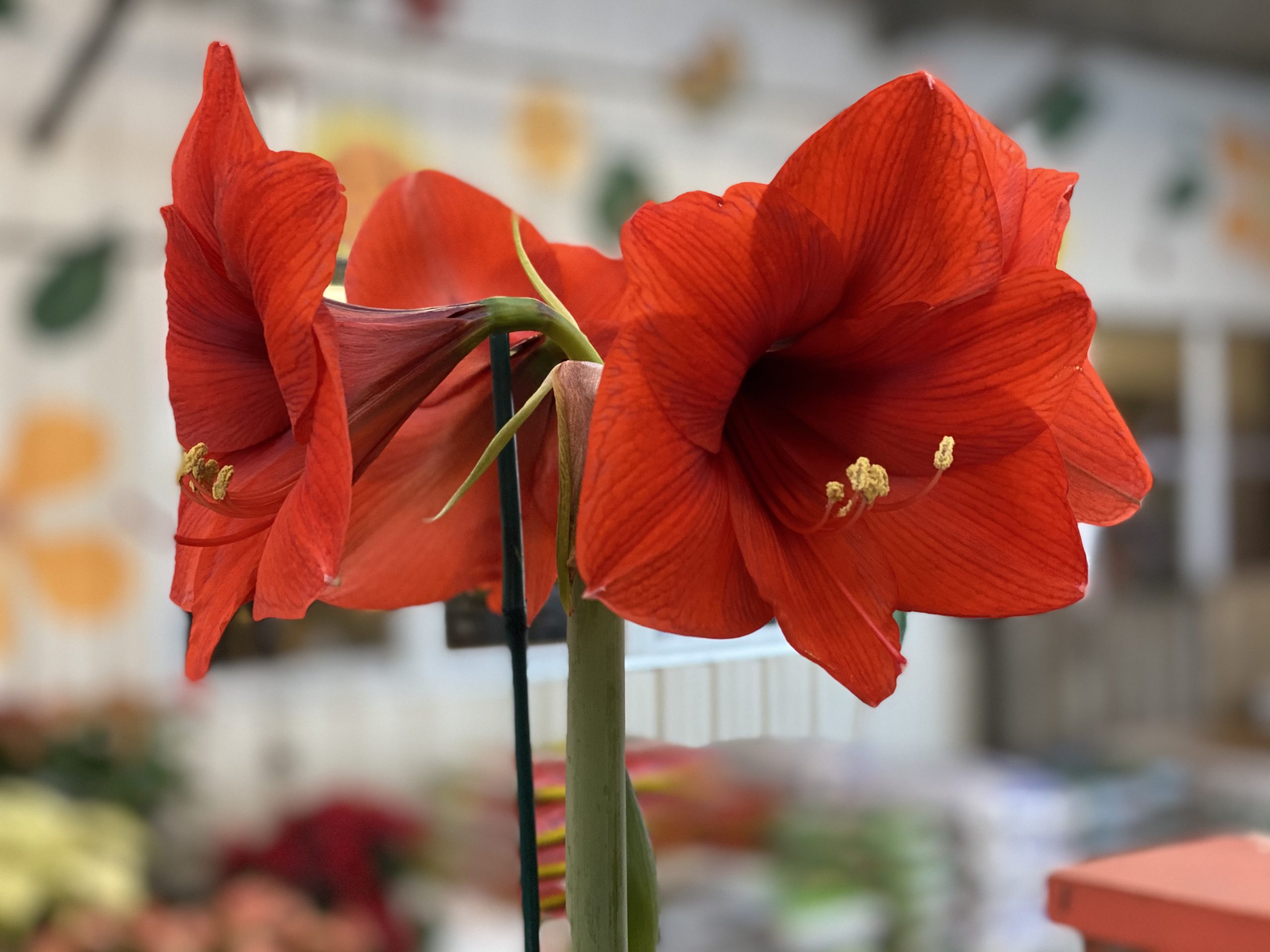
- Keep in good indirect indoor light
- Keep soil moist but not wet
- Once bloom fades, trim and plant in garden, leaving center of bulb above soil level
Fun facts: The gift that keeps on giving – they multiply! They can be divided each year to share with loved ones.
Paperwhite Narcissus
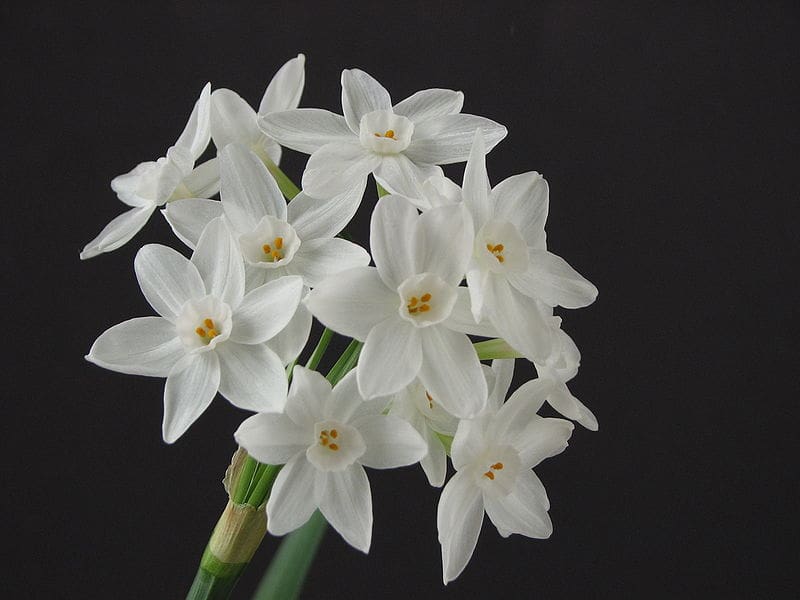
- Refrigerate for 4-6 weeks prior to planting. (plant around Thanksgiving for holiday blooms!)
- Fill a clear vase with a few inches of pea gravel.
- Nestle bulbs side by side into the gravel.
- Add water up to the bottom of the bulb and
place near a sunny window.
Fun facts: Native to the Mediterranean region. Paperwhites were an early item of commerce – they arrived in China during the Late Sung period, about 1,000 years ago, probably introduced by Arab traders.
Cyclamen
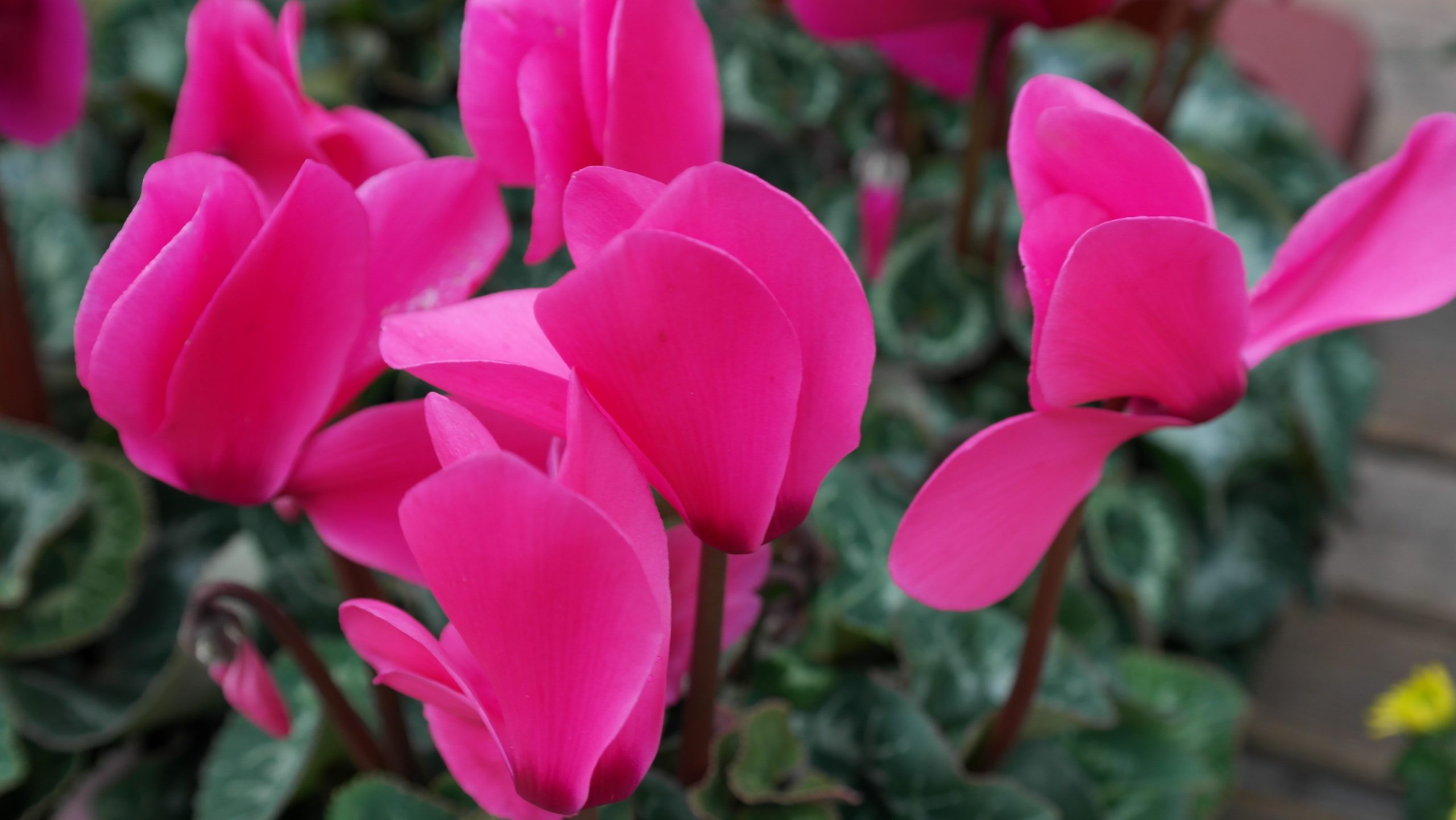
- One more time…keep in good indirect indoor or outdoor light
- Water when dry
- Trim spent blooms to encourage new blooms
- Best outdoors in pots once holiday season is over
Fun facts: Cyclamen are associated with falling in love, raising self-esteem and confidence, and even healing snake bites (we would not suggest trying this one). Some say putting Cyclamen flowers in your nostrils is a cure for baldness!

